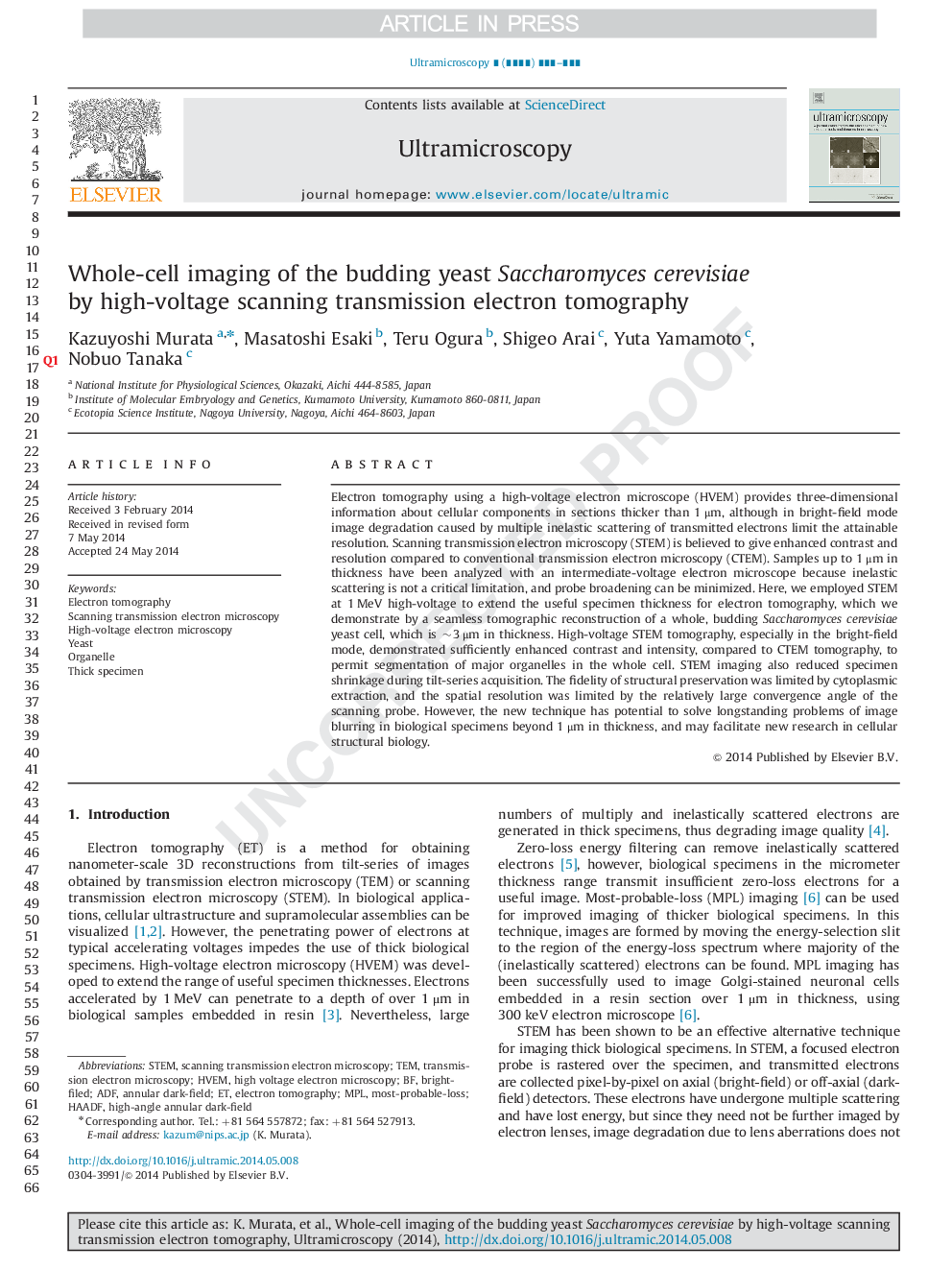| Article ID | Journal | Published Year | Pages | File Type |
|---|---|---|---|---|
| 8038274 | Ultramicroscopy | 2014 | 7 Pages |
Abstract
Electron tomography using a high-voltage electron microscope (HVEM) provides three-dimensional information about cellular components in sections thicker than 1 μm, although in bright-field mode image degradation caused by multiple inelastic scattering of transmitted electrons limit the attainable resolution. Scanning transmission electron microscopy (STEM) is believed to give enhanced contrast and resolution compared to conventional transmission electron microscopy (CTEM). Samples up to 1 μm in thickness have been analyzed with an intermediate-voltage electron microscope because inelastic scattering is not a critical limitation, and probe broadening can be minimized. Here, we employed STEM at 1 MeV high-voltage to extend the useful specimen thickness for electron tomography, which we demonstrate by a seamless tomographic reconstruction of a whole, budding Saccharomyces cerevisiae yeast cell, which is ~3 μm in thickness. High-voltage STEM tomography, especially in the bright-field mode, demonstrated sufficiently enhanced contrast and intensity, compared to CTEM tomography, to permit segmentation of major organelles in the whole cell. STEM imaging also reduced specimen shrinkage during tilt-series acquisition. The fidelity of structural preservation was limited by cytoplasmic extraction, and the spatial resolution was limited by the relatively large convergence angle of the scanning probe. However, the new technique has potential to solve longstanding problems of image blurring in biological specimens beyond 1 μm in thickness, and may facilitate new research in cellular structural biology.
Keywords
Related Topics
Physical Sciences and Engineering
Materials Science
Nanotechnology
Authors
Kazuyoshi Murata, Masatoshi Esaki, Teru Ogura, Shigeo Arai, Yuta Yamamoto, Nobuo Tanaka,
